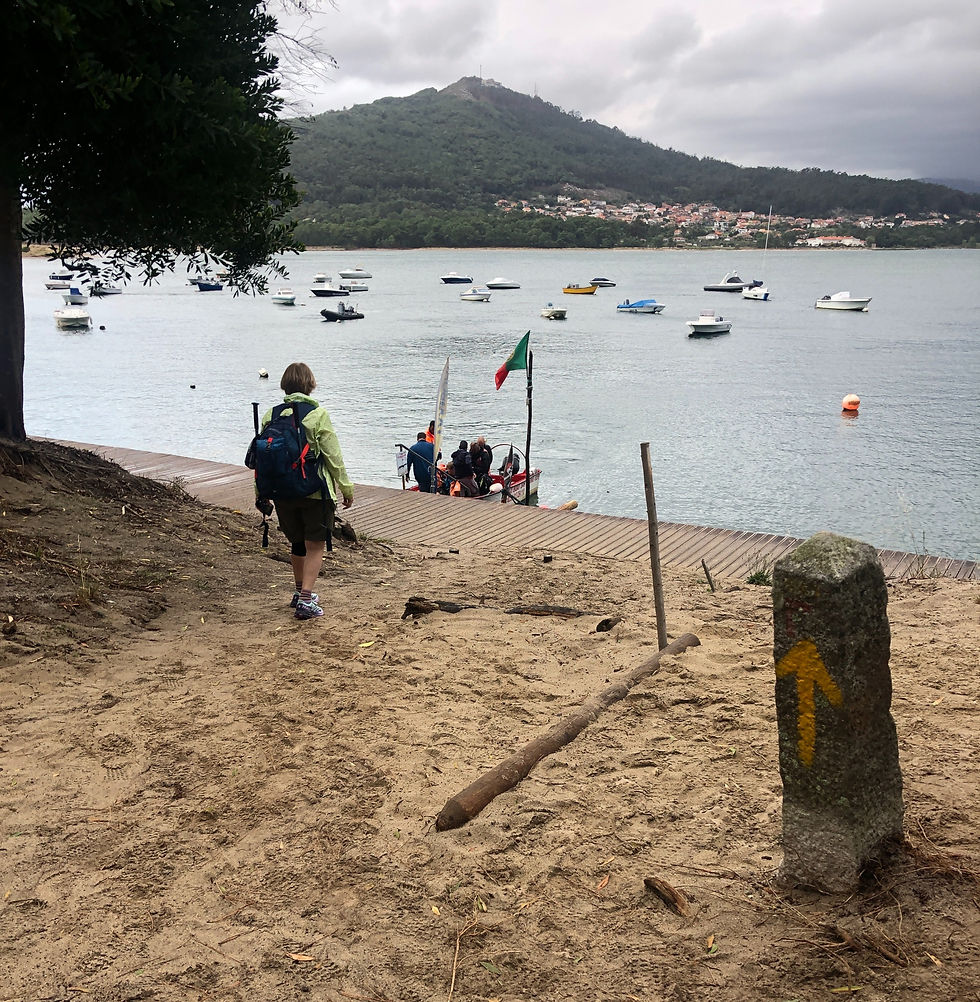Viana do Castelo to Caminha: Portuguese Coastal Camino Day 6
- Tim Mathis

- Oct 13, 2023
- 4 min read
Updated: Oct 15, 2023
In this introduction to the stages of the Portuguese Coastal Camino, I'm focusing on the stuff you actually need to know. You'll sort out accommodation and restaurants and so forth on your own as you travel. I'll cover the things that you don't want to miss along the way. For everything else, check out this article: What do you REALLY need to know about the Portuguese Coastal Camino?

A rundown of the Portuguese Coastal Camino: Viana do Castelo to Caminha
Distance
27 km/16.75 miles
Terrain
Some general urban road walking out of Viana do Castelo, then a mix of cobblestones, narrow lanes, boardwalks and nice rural paths. Nothing too notable in terms of climbs or descents though there's a bit of up and down through the day.

Experience
And just like that, you're on your last stage before leaving Portugal - assuming you stick to the Coastal Route like we did. (After this stage, a lot of people follow the river from Caminha to Tui, and connect with the Central Portuguese Camino. There's no reason to do that though - the Coastal Route in Spain is just as beautiful, if not more so, than it was in Portugal.)
My photos from this stage are lackluster because it started to rain on us in the afternoon, and I didn't get out my camera. It actually is another very nice stage though, once you make it through the outskirts of Viana do Castelo (which are disappointingly industrial after the very pleasant introduction to the city on the prior stage). If you follow the Senda Litoral/Coastal path, for most of the day you'll be on flat terrain, along nice coastline, through pleasant towns until you get to Caminha, a beautiful, historic town on the mouth of the Minha River.
During the first part of the day, you'll pass forts and windmills, and the serviceable little towns of Areosa and Carreco.
Vila Praia de Ancora is quite a pretty little seaside village with a nice chapel and a pleasant square.
If you take a small detour between the town of Ancora and the Praia you can see the Anta da Barrosa - a genuinely old structure - a monument from the 30th (?!) century BC. It's a stone monolith - think a small stonehenge with a granite roof - and you'll see signs in the area with its image.
The way involves really beautiful coastal walking after this. To me, you're starting to feel the proximity to Galicia at this stage. It's all green and ferns and cattle enjoying nice coastal views.
The stage ends at Caminha - a nice town at the mouth of the Minha River with a lot of history. The Igreja de Misericordia here has been serving pilgrims as a chapel and hospital since the 16th century. The exterior is nondescript but go in if you have the opportunity. The interior is ornate.
Nearby in the town center is an old castle keep - you can't miss it. The area was fortified against invaders in the 12th century, and this old structure is now a clock tower. Caminha's pretty main square is a great place for dinner or beers, with a 15th century fountain and the castle tower adding an air of romance to the experience. It all feels like a scene out of Beauty and the Beast or something.
You've made it to the mouth of the Minha, which is a significant location in both Spanish and Portuguese history, serving as the border between the countries. In the morning, if you continue on the Coastal Way, you'll cross the river by boat and notice the prominent fort built on an island in the middle of the river. Monks lived there as early as the 14th century. The fort built in the 17th to protect the river during the age of conquest.

Catching the boat across the Minho River from Caminha to A Guarda
If you're like most, you'll be anxious to sort out how to arrange a boat across the river from Caminha to A Guarda for the next stage.
Most people coordinate this when they arrive in Caminha because the timetables fluctuate with the tide, and it's a small, relatively informal operation. If you're staying in an albergue, just ask the host and they can help. They do this every day, and can give advice on timetables as well as transport to the water taxi, which leaves from outside of the town center.
It is also possible to arrange a ride yourself if you want. At time of writing the company serving pilgrims is called Taxi-Mar and they have a website with contact information.
I won't quote a price here because these things change, but it was very affordable. And as far as I know, they don't sell out - they simply keep making trips until everyone is across. It's probably worth calling ahead if you're planning to cross in low season, because it's a small operation.
The trip takes about 15 minutes, features great views up the Minho and out to the Atlantic, and leaves you on a beach where you can connect back to the Camino in Spain. It's a nice little adventure as you say goodbye to Portugal.







Comments